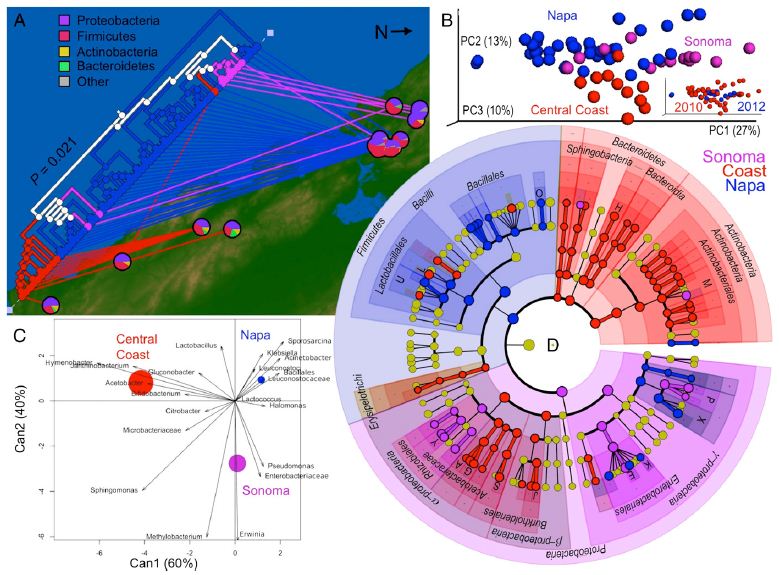PNAS:研究揭示葡萄园环境条件与微生物模式联系 解释葡萄酒质
美国加利福尼亚大学戴维斯分校的David Mills及其同事近日研究发现地区、气候和葡萄品种影响着酿酒葡萄表面存在的真菌和细菌群落。文章发表在近期的《PNAS》期刊上。

一项研究发现,在酿酒葡萄中存在的细菌和真菌群落与地区、气候和葡萄类型有联系。尽管酿酒葡萄携带一大批微生物,其中许多已知能影响葡萄藤的健康和葡萄质量,称为“风土”(terroir)的地区葡萄酒的特性常常被归结于生长技术以及地理因素。David Mills及其同事研究了葡萄上的微生物群落是否依据葡萄生长地的不同而变化。
这组作者分析了加利福尼亚各地的葡萄园的两个生长季节的273份葡萄汁样本,结果发现地区、气候和葡萄品种影响着酿酒葡萄表面存在的真菌和细菌群落。
这些发现提示在葡萄园环境条件和微生物模式之间存在一种联系。这组作者提出,这些模式可能有助于解释葡萄酒质量的地区差异。
此外,该研究提示酿酒者可以开发出定制的策略从而改变微生物群落,改善葡萄和葡萄酒质量。这组作者说,这些发现还可能对于其他可能受到微生物群落的地区差异影响的农业产品具有意义。
原文摘要:
Microbial biogeography of wine grapes is conditioned by cultivar, vintage, and climate
Nicholas A. Bokulicha,b,c, John H. Thorngated, Paul M. Richardsone, and David A. Mills
Wine grapes present a unique biogeography model, wherein microbial biodiversity patterns across viticultural zones not only answer questions of dispersal and community maintenance, they are also an inherent component of the quality, consumer acceptance, and economic appreciation of a culturally important food product. On their journey from the vineyard to the wine bottle, grapes are transformed to wine through microbial activity, with indisputable consequences for wine quality parameters. Wine grapes harbor a wide range of microbes originating from the surrounding environment, many of which are recognized for their role in grapevine health and wine quality. However, determinants of regional wine characteristics have not been identified, but are frequently assumed to stem from viticultural or geological factors alone. This study used a high-throughput, short-amplicon sequencing approach to demonstrate that regional, site-specific, and grape-variety factors shape the fungal and bacterial consortia inhabiting wine-grape surfaces. Furthermore, these microbial assemblages are correlated to specific climatic features, suggesting a link between vineyard environmental conditions and microbial inhabitation patterns. Taken together, these factors shape the unique microbial inputs to regional wine fermentations, posing the existence of nonrandom “microbial terroir” as a determining factor in regional variation among wine grapes.

